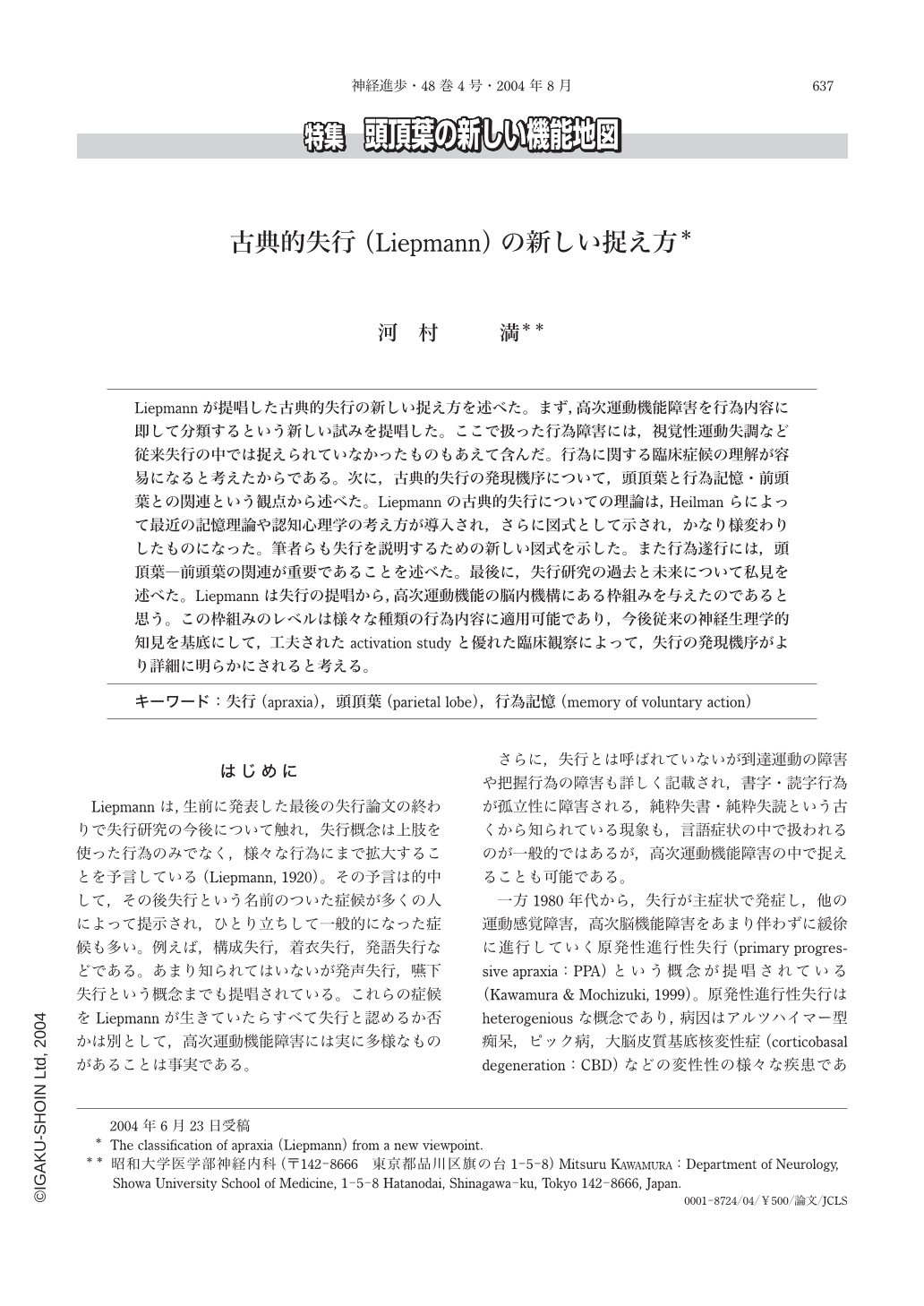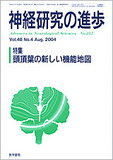Japanese
English
- 有料閲覧
- Abstract 文献概要
- 1ページ目 Look Inside
- サイト内被引用 Cited by
Liepmannが提唱した古典的失行の新しい捉え方を述べた。まず,高次運動機能障害を行為内容に即して分類するという新しい試みを提唱した。ここで扱った行為障害には,視覚性運動失調など従来失行の中では捉えられていなかったものもあえて含んだ。行為に関する臨床症候の理解が容易になると考えたからである。次に,古典的失行の発現機序について,頭頂葉と行為記憶・前頭葉との関連という観点から述べた。Liepmannの古典的失行についての理論は,Heilmanらによって最近の記憶理論や認知心理学の考え方が導入され,さらに図式として示され,かなり様変わりしたものになった。筆者らも失行を説明するための新しい図式を示した。また行為遂行には,頭頂葉―前頭葉の関連が重要であることを述べた。最後に,失行研究の過去と未来について私見を述べた。Liepmannは失行の提唱から,高次運動機能の脳内機構にある枠組みを与えたのであると思う。この枠組みのレベルは様々な種類の行為内容に適用可能であり,今後従来の神経生理学的知見を基底にして,工夫されたactivation studyと優れた臨床観察によって,失行の発現機序がより詳細に明らかにされると考える。
A first classification and comprehensive theory on the neural mechanism of apraxia was presented by Liepmann(1920)with several schematic diagrams. Since then, a number of studies on the mechanism of apraxia have been carried out, although none of these seem to have surpassed the work of Liepmann and its comprehensive content.
In this article I will present some of my own cases, which exemplify the validity of the Liepmann schemata of apraxia, and some comments are made from a new viewpoint. I will then go on to propose the classification of apraxia(Liepmann)from a new viewpoint.
1.Actions and their disturbances
The author classifies actions into 9 categories:reaching, grasping, pantomime, imitation, using tools, construction, dressing, writing and speech. Apraxia is found in each action.
2.The parietal lobe and memory of voluntary actions
Disturbances in these actions are found in parietal lobe lesions, whether the lesion is in the left or the right lobe. These facts show that the parietal lobe retains the memory of voluntary actions.
3.The parietal lobe and frontal lobe
The author(1992, 1994)investigated disturbances of action found in seven cases with lesions in the anterior frontal lobe and compared them with disturbances of action in ideational/ideo-motor apraxias(Liepmann). Based on the results of this investigation, a hypothesis was obtained on the neural mechanism for voluntary action. This hypothesis suggested that the frontal lobe has an inhibitory function which relates to performing actions, and the parietal lobe has an excitatory function.

Copyright © 2004, Igaku-Shoin Ltd. All rights reserved.


